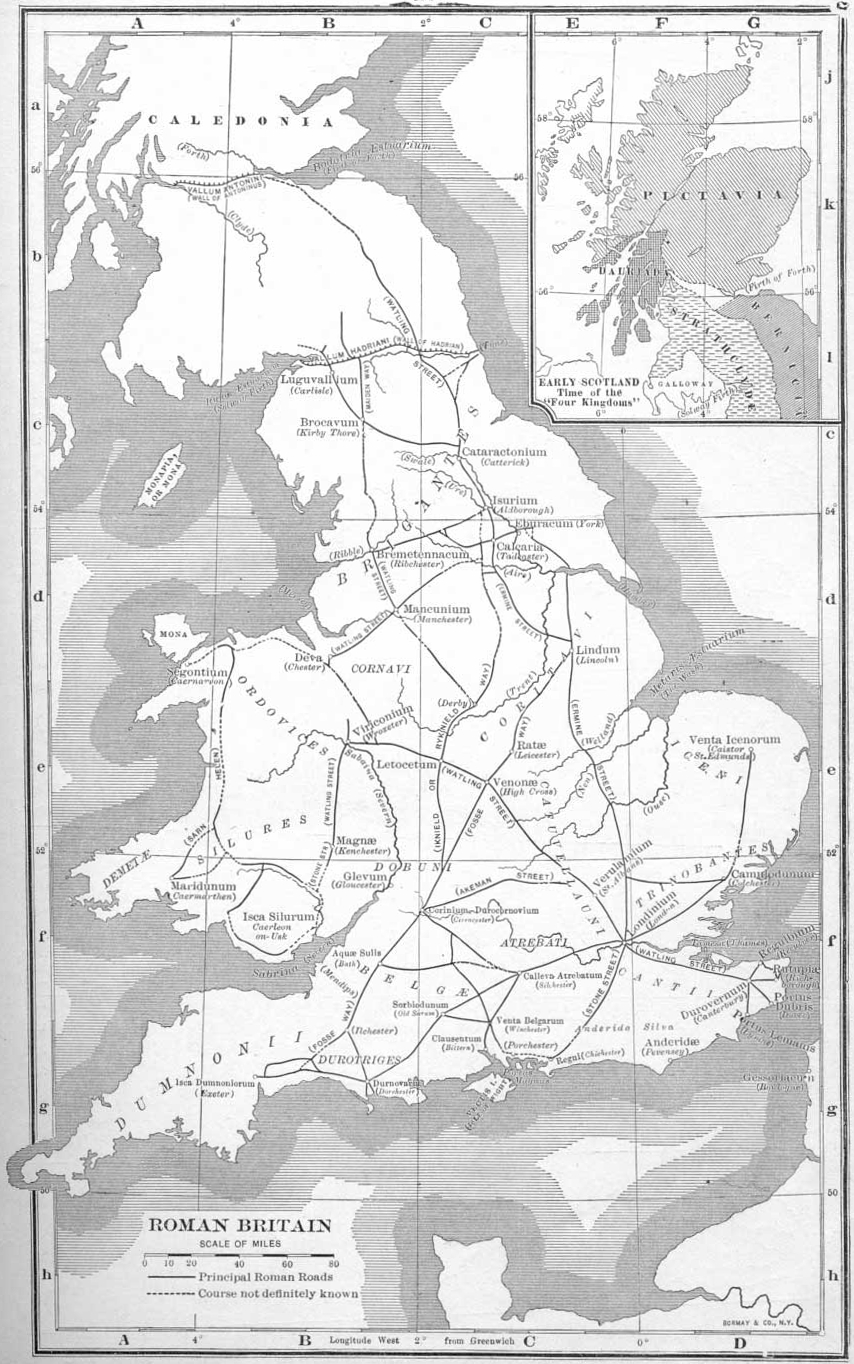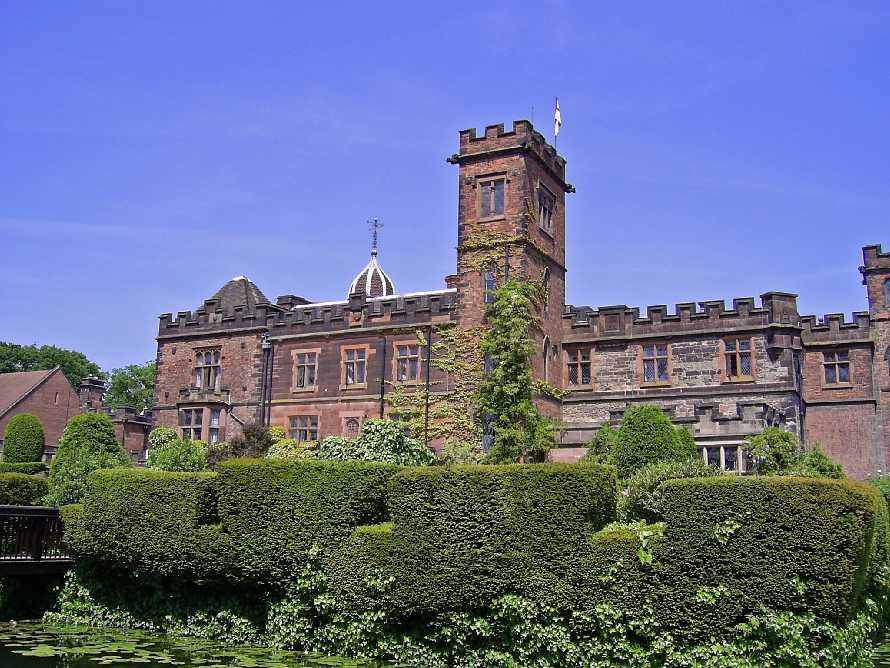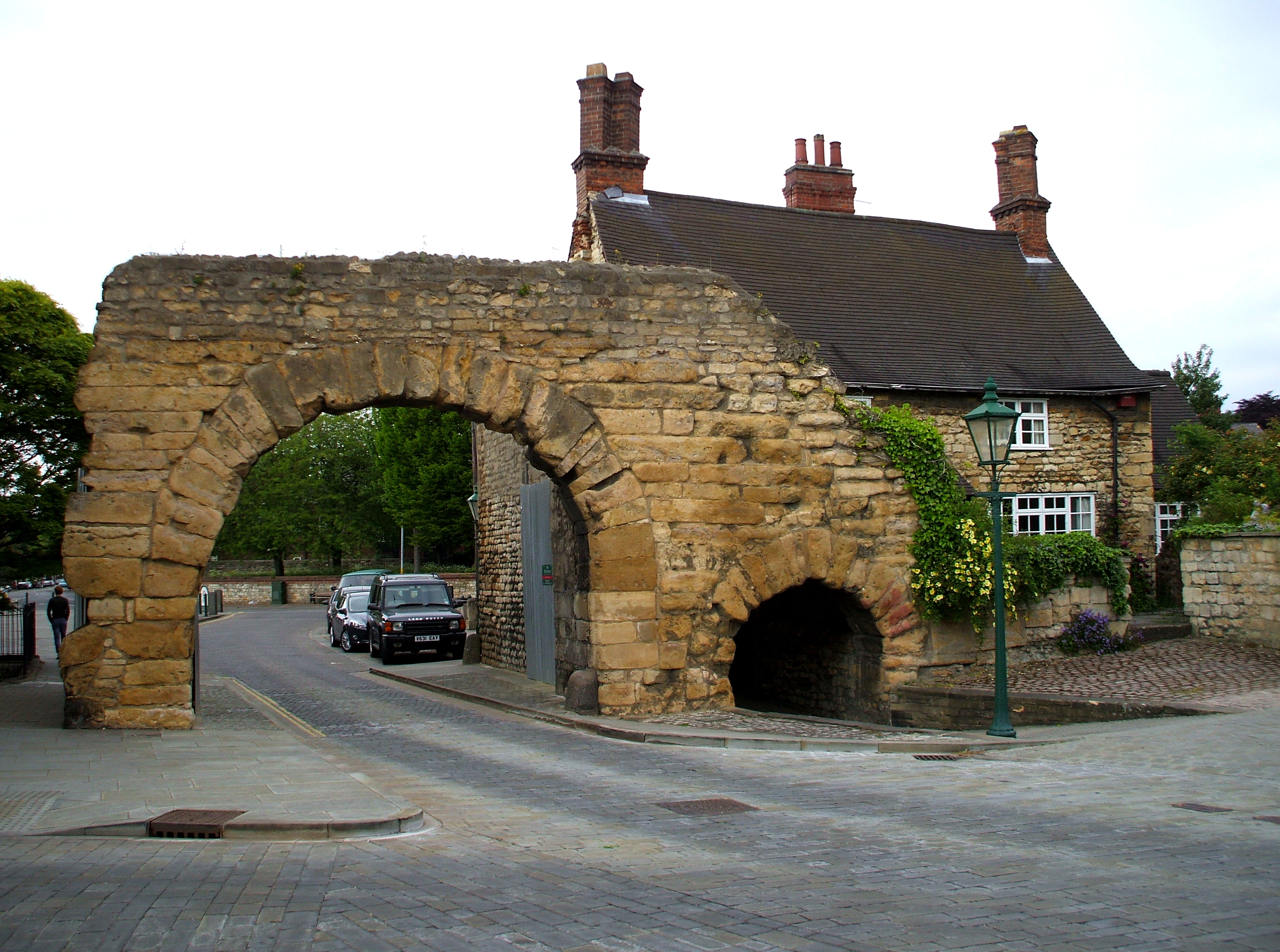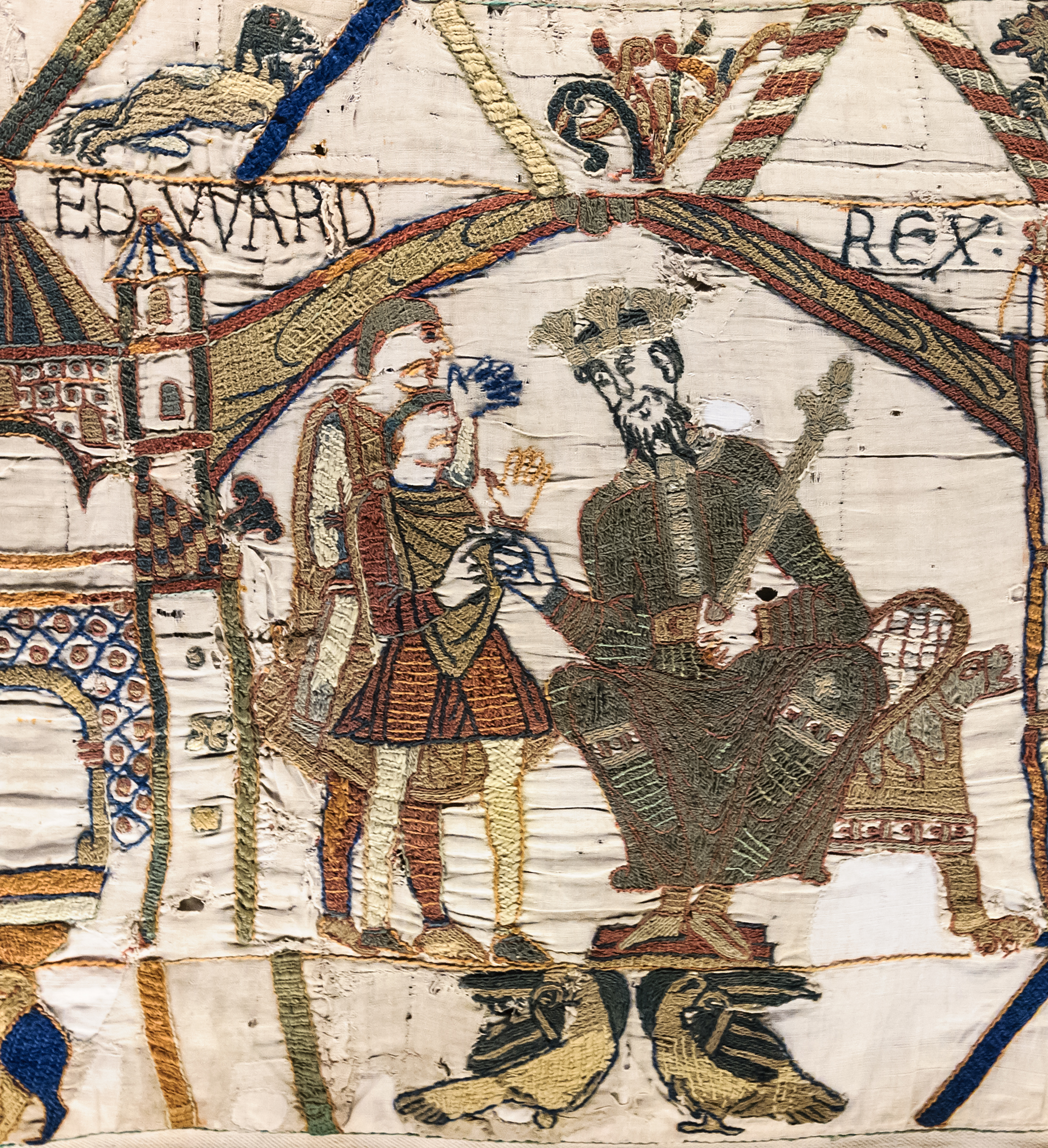|
Ryknield Street
Icknield Street or Ryknild Street is a Roman road in England, with a route roughly south-west to north-east. It runs from the Fosse Way at Bourton on the Water in Gloucestershire () to Templeborough in South Yorkshire (). It passes through Alcester, Studley, Redditch, Metchley Fort, Birmingham, Sutton Coldfield, Lichfield, Burton upon Trent and Derby. Names Four Roman roads having the King's protection are named in the Laws of Edward the Confessor: Watling Street, Ermine Street, the Fosse Way, and Hikenild or Icknield Street. Hikenild Strete is generally supposed to be connected with the country of the Iceni. Various forms of the name (the earliest in Anglo-Saxon charters are Icenhilde Weg or Icenilde Weg) designate other roads from the borders of Norfolk through Cambridgeshire, Bucks, Berks, Hants and Wilts into Dorset. These locations, however, would identify the route as Icknield Way an Iron Age trackway running from Norfolk to Dorset. What is today referred to as the I ... [...More Info...] [...Related Items...] OR: [Wikipedia] [Google] [Baidu] |
Lower Swell
Lower Swell is a village and former civil parish, now in the parish of Swell, in the Cotswold district, in the county of Gloucestershire, England. It is located at the River Dikler, one mile from Stow-on-the-Wold. The village has "finest countryside, a tranquil village green and plenty of mellow stone cottages". The village church is dedicated to St. Mary. In 1931 the parish had a population of 360. History On 1 April 1935 the parish was abolished and merged with Upper Swell to form Swell. Origin of the name Daniel Henry Haigh, a noted Victorian scholar of Anglo-Saxon history and literature, is certain that "swell" means "burning", or "funeral pile". He says that there was a battle fought by Offa of Mercia in the vicinity of Lower Swell. David Royce, who is the Vicar of Lower Swell, has said that during the reconstruction of the church "a long deep bed of ashes was discovered in his churchyard, and that, of eleven barrows in the parish, the largest is called Picked Morden, a ... [...More Info...] [...Related Items...] OR: [Wikipedia] [Google] [Baidu] |
Sutton Coldfield
Sutton Coldfield or the Royal Town of Sutton Coldfield ( ), is a town and civil parish in the city of Birmingham, West Midlands County, West Midlands, England. The town lies around 8 miles northeast of Birmingham city centre, 9 miles south of Lichfield, 7 miles southwest of Tamworth, Staffordshire, Tamworth, and 7 miles east of Walsall. Sutton Coldfield and its surrounding suburbs are governed under Birmingham City Council for local government purposes but the town has its own Parish councils in England, town council which governs the town and its surrounding areas by running local services and electing a mayor to the council. It is in the Historic counties of England, historic county of Warwickshire, and in 1974 it became part of Birmingham and the West Midlands County, West Midlands metropolitan county under the Local Government Act 1972. History Etymology The etymology of the name Sutton appears to be from "South Town". The name "Sutton Coldfield" appears to come from th ... [...More Info...] [...Related Items...] OR: [Wikipedia] [Google] [Baidu] |
Ranulf Higdon
Ranulf Higden or Higdon (–1363 or 1364) was an English chronicler and a Benedictine monk who wrote the ''Polychronicon'', a Late Medieval magnum opus. Higden resided at the monastery of St. Werburgh in Chester after taking his monastic vow at Benedictine Abbey in Chester in 1299. Later in life he travelled to visit and counsel with King Edward III. Higden's remains are buried in Chester Cathedral. Higden wrote many works, including the ''Polychronicon, Ars componendi sermones,'' and ''Speculum curatorum.'' Higden began compiling the ''Polychronicon,'' a seven-book series about world history written in Latin'','' during the reign of Edward III. He is sometimes associated with the Chester Plays, but there is also doubt surrounding this association. ''Ars componendi sermones'' and ''Speculum curatorum'' address religious topics. Biography Ranulf Higden was born in about 1280 and is believed to have been born in the West of England. He joined St. Werburgh abbey in Chester, E ... [...More Info...] [...Related Items...] OR: [Wikipedia] [Google] [Baidu] |
Dorset
Dorset ( ; Archaism, archaically: Dorsetshire , ) is a Ceremonial counties of England, ceremonial county in South West England. It is bordered by Somerset to the north-west, Wiltshire to the north and the north-east, Hampshire to the east, the Isle of Wight across the Solent to the south-east, the English Channel to the south, and Devon to the west. The largest settlement is Bournemouth, and the county town is Dorchester, Dorset, Dorchester. The county has an area of and a population of 772,268. Around half of the population lives in the South East Dorset conurbation, which contains three of the county's largest settlements: Bournemouth (183,491), Poole (151,500), and Christchurch, Dorset, Christchurch (31,372). The remainder of the county is largely rural, and its principal towns are Weymouth, Dorset, Weymouth (53,427) and Dorchester, Dorset, Dorchester (21,366). Dorset contains two Unitary authorities in England, unitary districts: Bournemouth, Christchurch and Poole (BCP) ... [...More Info...] [...Related Items...] OR: [Wikipedia] [Google] [Baidu] |
Iron Age
The Iron Age () is the final epoch of the three historical Metal Ages, after the Chalcolithic and Bronze Age. It has also been considered as the final age of the three-age division starting with prehistory (before recorded history) and progressing to protohistory (before written history). In this usage, it is preceded by the Stone Age (subdivided into the Paleolithic, Mesolithic and Neolithic) and Bronze Age. These concepts originated for describing Iron Age Europe and the ancient Near East. In the archaeology of the Americas, a five-period system is conventionally used instead; indigenous cultures there did not develop an iron economy in the pre-Columbian era, though some did work copper and bronze. Indigenous metalworking arrived in Australia with European contact. Although meteoric iron has been used for millennia in many regions, the beginning of the Iron Age is defined locally around the world by archaeological convention when the production of Smelting, smelted iron (espe ... [...More Info...] [...Related Items...] OR: [Wikipedia] [Google] [Baidu] |
Icknield Way
The Icknield Way is an ancient trackway in southern and eastern England that runs from Norfolk to Wiltshire. It follows the chalk escarpment that includes the Berkshire Downs and Chiltern Hills. Background It is generally said to be, within Great Britain, one of the oldest roads the route of which can still be traced, being one of the few long-distance trackways to have existed before the Romans occupied the country. However, this has been disputed, and the evidence for its being a prehistoric route has been questioned. The name is Celto-British in derivation, and may be named after the Iceni tribe. They may have established this route to permit trade with other parts of the country from their base in East Anglia. It has also been suggested that the road has older prehistoric origins. The name is also said to have been initially used for the part to the west and south (i.e. south of the River Thames) but now refers usually to the track or traces north of the Thames. From ... [...More Info...] [...Related Items...] OR: [Wikipedia] [Google] [Baidu] |
Norfolk
Norfolk ( ) is a Ceremonial counties of England, ceremonial county in England, located in East Anglia and officially part of the East of England region. It borders Lincolnshire and The Wash to the north-west, the North Sea to the north and east, Cambridgeshire to the west, and Suffolk to the south. The largest settlement is the city of Norwich. The county has an area of and a population of 859,400. It is largely rural with few large towns: after Norwich (147,895), the largest settlements are King's Lynn (42,800) in the north-west, Great Yarmouth (38,693) in the east, and Thetford (24,340) in the south. For local government purposes Norfolk is a non-metropolitan county with seven districts. The centre of Norfolk is gently undulating lowland. To the east are the Broads, a network of rivers and lakes which extend into Suffolk and which are protected by the Broads Authority, which give them a similar status to a National parks of England and Wales, national park. To the west the ... [...More Info...] [...Related Items...] OR: [Wikipedia] [Google] [Baidu] |
Iceni
The Iceni ( , ) or Eceni were an ancient tribe of eastern Britain during the British Iron Age, Iron Age and early Roman Britain, Roman era. Their territory included present-day Norfolk and parts of Suffolk and Cambridgeshire, and bordered the area of the Corieltauvi to the west, and the Catuvellauni and Trinovantes to the south. In the Roman period, their capital was Venta Icenorum at modern-day Caistor St Edmund. Julius Caesar does not mention the Iceni in his account of his Caesar's invasions of Britain, invasions of Britain in 55 and 54 BC, though they may be related to the Cenimagni, whom Caesar notes as living north of the River Thames at that time. The Iceni were a significant power in eastern Britain during Claudius' Roman conquest of Britain, conquest of Britain in AD 43, following which they allied with Rome. Increasing Roman influence on their affairs led to revolt in AD 47, though they remained nominally independent under king Prasutagus until his death around AD 60. R ... [...More Info...] [...Related Items...] OR: [Wikipedia] [Google] [Baidu] |
Ermine Street
Ermine Street is a major Roman road in England that ran from London (''Londinium'') to Lincoln ('' Lindum Colonia'') and York ('' Eboracum''). The Old English name was ''Earninga Strǣt'' (1012), named after a tribe called the ''Earningas'', who inhabited a district later known as ''Armingford Hundred'', around Arrington, Cambridgeshire, and Royston, Hertfordshire. "Armingford", and "Arrington" share the same Old English origin. The original Celtic and Roman names for the route remain unknown. It is also known as the Old North Road from London to where it joins the A1 Great North Road near Godmanchester. Course Ermine Street begins at Bishopsgate, where one of the seven gates in the wall surrounding Roman London was located. From here it runs north up Norton Folgate, Shoreditch High Street and Kingsland Road through Stoke Newington (forming Stoke Newington Road and Stoke Newington High Street), Tottenham, Edmonton and eastern Enfield (Ponders End, Enfield Hig ... [...More Info...] [...Related Items...] OR: [Wikipedia] [Google] [Baidu] |
Watling Street
Watling Street is a historic route in England, running from Dover and London in the southeast, via St Albans to Wroxeter. The road crosses the River Thames at London and was used in Classical Antiquity, Late Antiquity, and throughout the Middle Ages. It was used by the ancient Britons and paved as one of the main Roman roads in Britannia (Roman-governed Great Britain during the Roman Empire). The line of the road was later the southwestern border of the Danelaw with Wessex and Mercia, and Watling Street was numbered as one of the major highways of medieval England. First used by the ancient Britons, mainly between the areas of modern Canterbury and using a natural ford near Westminster, the road was later paved by the Romans. It connected the ports of Dubris (Dover), Rutupiae ( Richborough Castle), Lemanis ( Lympne), and Regulbium (Reculver) in Kent to the Roman bridge over the Thames at Londinium (London). The route continued northwest through Verulamium (St&n ... [...More Info...] [...Related Items...] OR: [Wikipedia] [Google] [Baidu] |
Leges Edwardi Confessoris
The title ''Leges Edwardi Confessoris'', or ''Laws of Edward the Confessor'', refers to a collection of laws, purporting to represent English law in the time of Edward the Confessor (reigned 1042–1066), as recited to the Norman invader king William I in 1070, but which was not composed until probably the early years of the reign of King Stephen (r. 1135–1154). Background The issue of continuity and change in post conquest England is a topic of significant debate in scholarship. By 1086, there were very few Englishmen among the 200 or so major landowners recorded in the Domesday Book. Normans, Flemings, Bretons and others had settled on the estates of dead, dispossessed or outlawed English nobility. Contemporary chroniclers were divided, with Henry of Huntingdon writing that the English people had been "delivered pfor destruction by the violent and cunning Norman people", while William of Poitiers lauded the Norman victory at the Battle of Hastings and said the slaughter o ... [...More Info...] [...Related Items...] OR: [Wikipedia] [Google] [Baidu] |
Peace (law)
The legal term peace, sometimes king's peace (Latin: )''Black's Law Dictionary'' (10th ed.: ed. Bryan A. Garner: Thomson Reuters, 2014), p. 1306. or queen's peace, is the common-law concept of the maintenance of public order.Markus Dirk Dubber, ''The Police Power: Patriarchy and the Foundations of American Government'' (Columbia University Press, 2005), pp. 15–16. The concept of the king's peace originated in Anglo-Saxon law, where it initially applied the special protections accorded to the households of the English kings and their retainers. A breach of the king's peace, which could be either a crime or a tort, was a serious matter. The concept of the king's peace expanded in the 10th and 11th centuries to accord the king's protection to particular times (such as holidays), places (such as highways and churches), and individuals (such as legates). By the time of the Norman Conquest, the notion of the king's peace became more general, referring to the safeguarding of public o ... [...More Info...] [...Related Items...] OR: [Wikipedia] [Google] [Baidu] |









